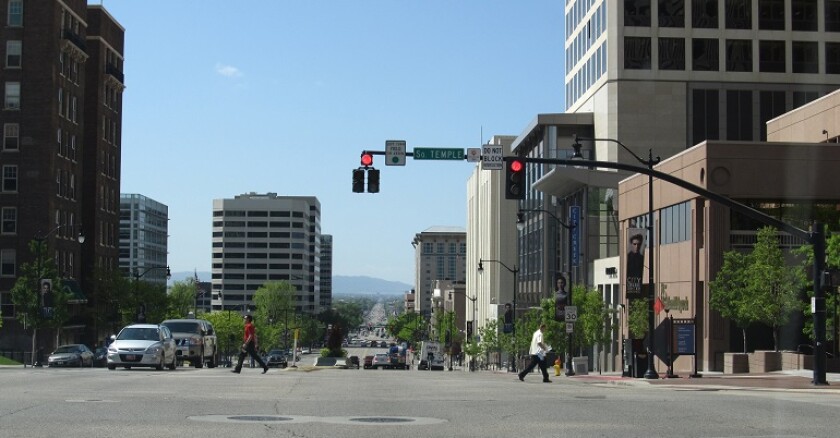This is because Salt Lake City has the largest blocks and widest streets of any major U.S. city. As I recently pointed out in my publication The Market Urbanism Report, downtown blocks in Salt Lake are 660 x 660 feet. By comparison, Austin and Little Rock, Ark., have block lengths and widths around 300 x 300 feet. Portland, Ore., which is known nationwide for its walkable downtown, has blocks that are 200 x 200 feet. It’s not just Salt Lake City’s blocks that are wide. Its streets are too: At 130 feet, they’re double the width of those in Manhattan, Portland and San Francisco.
This layout is a byproduct of the city’s Mormon heritage. In 1833, several years after founding the religion in upstate New York, Joseph Smith outlined how Mormon cities should look and feel. The plan drew from that era’s East Coast design principles, as well as the church’s desire for order. Smith called for a temple at the center of a grid and for large blocks that enabled family farming.
In the early years, the church, thanks to persecution, had trouble finding a permanent settlement where it could execute these plans. But when Mormons finally entered Utah in 1847, the church’s then-president, Brigham Young, applied Smith’s principles to Salt Lake City. Temple Square -- the current headquarters of the Mormon Church -- is in the center of the city. While Smith’s plan didn’t call for wide streets, Young added them, claiming that they would enable farmers to easily turn their cattle around without “resorting to profanity.”
Today, the only group cursing Salt Lake’s large blocks are urbanists. They consider them anachronisms for a densifying city, since they endanger pedestrians, separate uses and hinder walkability. Various activists have suggested implementing a “complete streets” strategy that features bike lanes, bulb-outs and medians. The Kentlands Initiative, a local nonprofit, has gone further, suggesting that the city build new housing and retail right in the middle of the streets. In this sense, Salt Lake City’s obscenely wide streets, while a problem, could also be an opportunity.
But while the city government is somewhat receptive to that notion, it’s unlikely to happen. There are challenges with being too creative, says Molly Robinson, an urban designer for the planning department, especially in the actual roadways. Robinson says that Utah’s arid climate makes plant-filled medians expensive to maintain, and that city residents cherish their mountain views. Putting trees, much less buildings, in the medians might block such views, which would be politically unpopular. So, for now, the Mormon planning principles that made Salt Lake City’s streets wide open remain intact.









